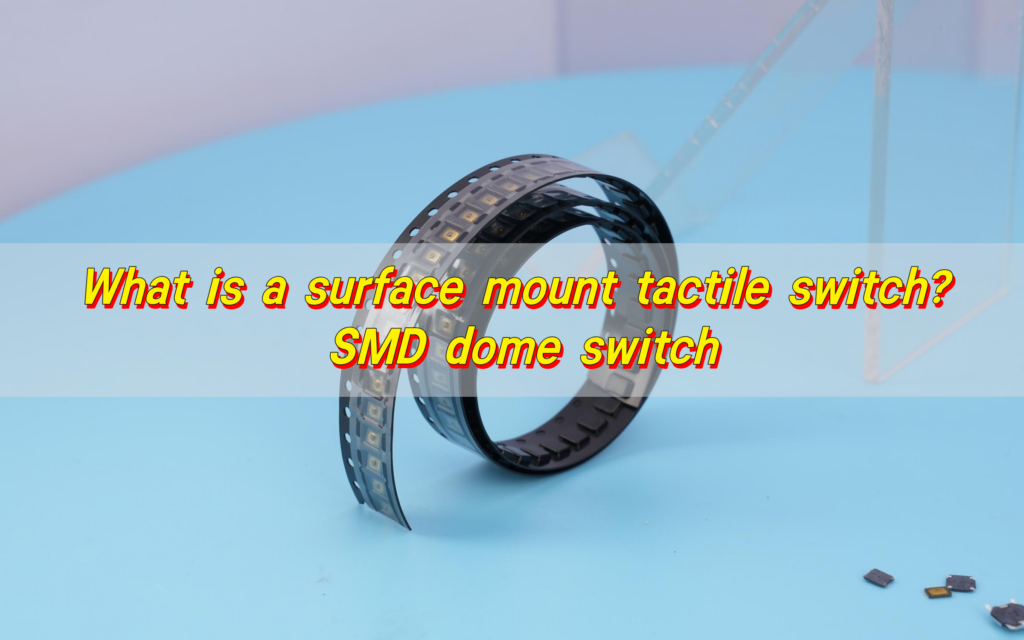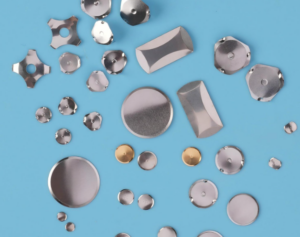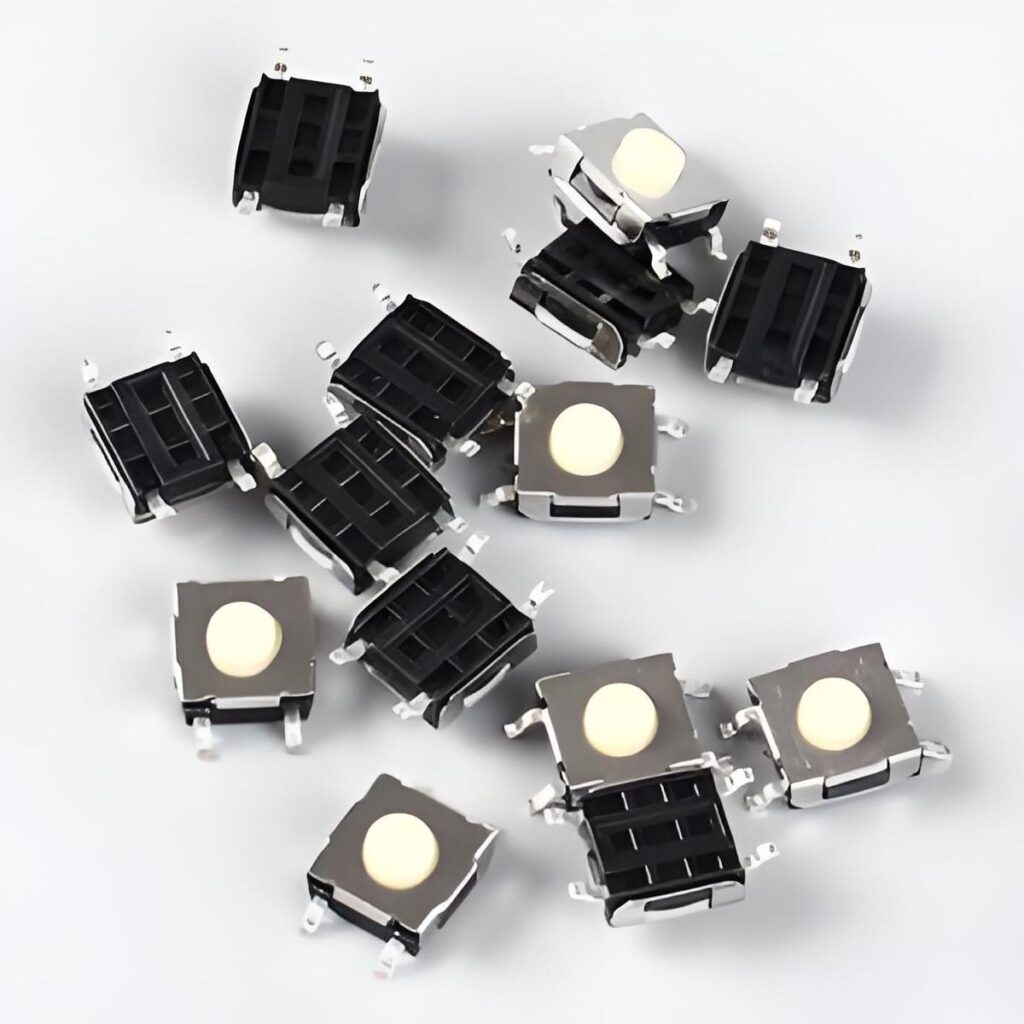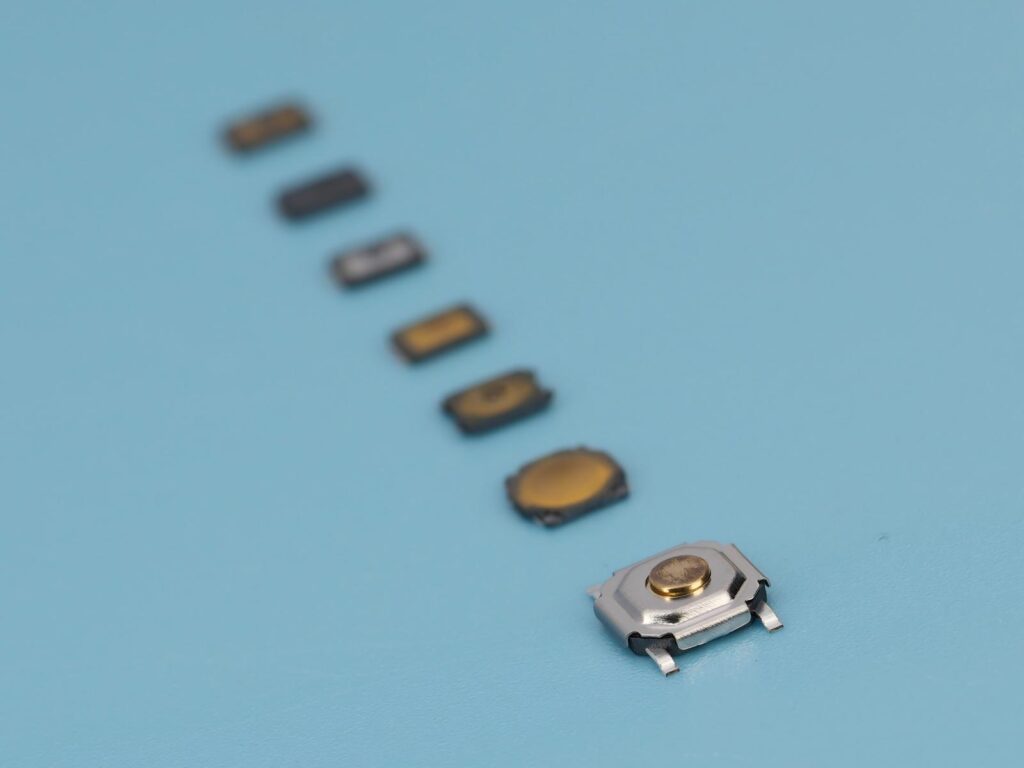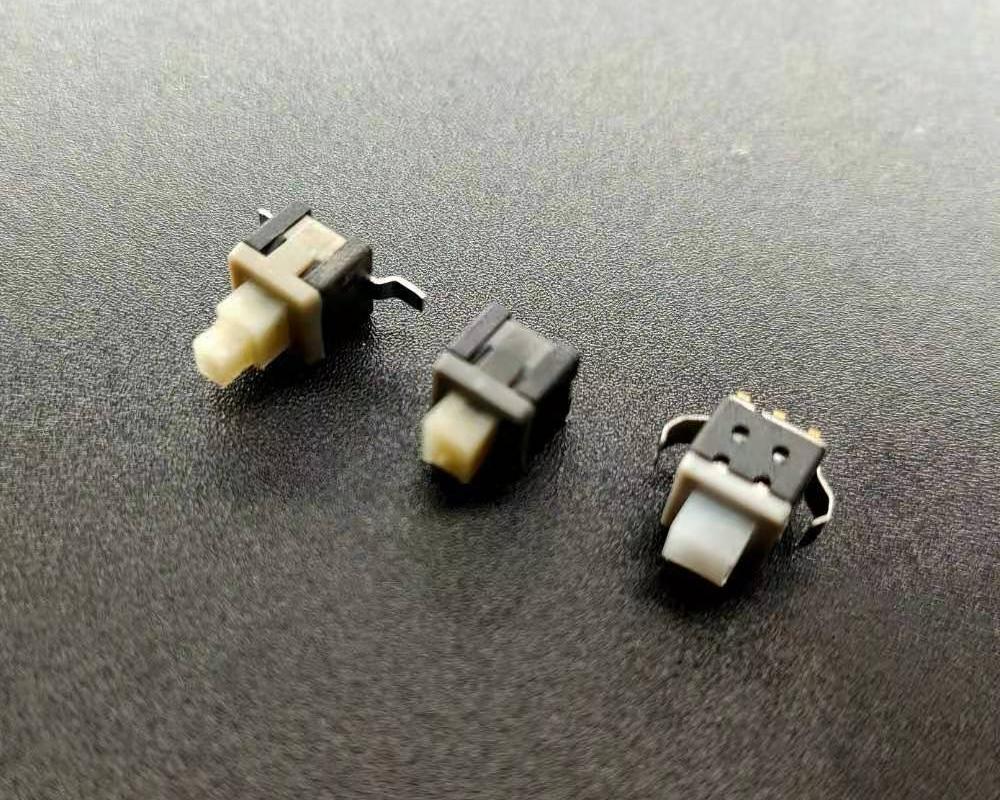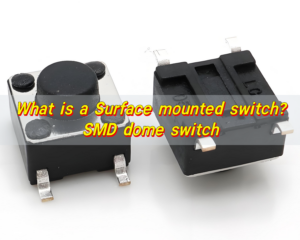Surface mount tactile switch (SMD dome switch) is a switch mounted on a circuit board using surface mount technology (SMD), which provides tactile feedback through the elastic deformation of the metal dome. It has the characteristics of miniaturization, high performance and easy automated production, and is widely used in electronic equipment.
What is a surface mounted switch?
Surface mounted switch is a type of switch that is directly mounted onto the surface of a circuit board. It doesn’t go through the board like traditional switches. Instead, it rests on top, making assembly faster and more space-efficient.
These switches are built for machines. Instead of manual soldering, they’re placed by automatic pick-and-place systems. This allows mass production at incredible speeds, especially useful in devices where every second and every millimeter count.
Surface mount switches are flat, compact, and easy to assemble. That’s why they are used in almost every smart device, industrial control panel, and high-tech medical tool. Their small size helps shrink device dimensions without losing functionality.
What is the difference between surface mount and SMD?
These two terms are closely connected, but they don’t mean the same thing.
Surface mount refers to the mounting method—placing components directly on the PCB surface. SMD, or surface mount device, is the actual component made to be mounted this way.
So, if you’re using a surface mount tactile switch, you’re using an SMD. The switch is the device, and it’s installed using surface mount technology.
In simple terms: SMD is the “what,” and surface mount is the “how.”
What are the pros and cons of surface mount technology?
The biggest pro is space. Surface mount switches are small and flat, allowing more parts in a limited space. This makes devices thinner, lighter, and more portable. It also reduces board size, which lowers production costs.
Another strong benefit is speed. SMT supports full automation. Machines can place thousands of switches per hour with precision. This means faster production and fewer errors.
It also saves cost. SMT reduces manual labor, speeds up assembly, and cuts down on board size. These all lead to a more affordable final product.
On the downside, these switches are harder to replace by hand. They’re small, and that makes repair work tricky. But these situations are rare. In most cases, the positives far outweigh the few drawbacks.
What is the difference between a tactile switch and a normal switch?
The key difference lies in feedback. A tactile switch gives a noticeable click when pressed. This snap comes from a metal dome inside the switch. It confirms the press to the user—both by sound and feel.
Normal switch may not provide this. It could be silent, soft, or simply activate without any physical cue.
Tactile switches are designed to improve user experience. That makes them ideal for control panels, keypads, and hand-held electronics where precision matters. They’re especially helpful in environments where visual feedback isn’t enough.
Normal switches might work fine in basic power control. But tactile switches take it a step further. They create a connection between the user and the device—clear, quick, and satisfying.
Are tactile switches slower?
No, tactile switches are not slower. In fact, surface mount tactile switches are built for speed.
The click is immediate. There’s no delay between pressing the button and registering the action. Because they require only light force, they respond quickly.
The term “tactile” might sound like something that needs effort or pressure, but that’s not the case. The tactile response is there to improve accuracy, not slow it down.
If anything, the physical feedback helps users act faster because they don’t have to guess if the switch worked.
Do tactile switches wear out?
Over time, any mechanical component will wear. But high-quality tactile switches are built to last.
Surface mount tactile switches that use metal domes can handle millions of presses. They’re designed for devices that are used every day—like medical instruments, industrial machines, and car dashboards.
The wear rate depends on usage and materials. Switches used in harsh environments might degrade faster. Those in clean, dry settings can last much longer.
Most good-quality tactile switches don’t fail easily. They’re tested for endurance and precision. If built with the right material, especially stainless steel domes, they offer long-term stability.
What is the lifespan of a tactile switch?
The average lifespan of a surface mount tactile switch is between 1 million to 5 million cycles. Some top-tier versions go up to 10 million presses. These are often used in sensitive equipment like ventilators, diagnostic tools, or aerospace panels.
The type of dome inside matters a lot. Metal domes last longer than rubber domes. They also provide sharper feedback and don’t degrade as quickly.
If you need a switch for heavy-duty use, go for metal dome models. They’re reliable, stable.
What are surface mount devices used for?
Surface mount devices are used in nearly every piece of modern electronics. They help shrink devices while boosting performance.
Common uses include:
- Smartphones and tablets: Buttons, sensors, and connectors.
- Remote controls: Compact and low-profile buttons.
- Industrial control panels: Durable and easy-to-mount control switches.
- Medical equipment: Reliable switches with long lifespans.
- Automotive systems: Dashboard buttons, infotainment controls.
- Wearable devices: Where space and weight are critical.
Surface mount tactile switches, in particular, are found in any place where space is tight, response needs to be fast, and user input must be confirmed. Their small size makes them perfect for dense boards.
Conslusion:
Surface mount tactile switch, or SMD dome switch, is more than just a tiny component. It’s the heart of interaction in modern electronics.
They save space, speed up production, and last for millions of presses. Their tactile feedback improves user experience, while their surface-mount design makes them perfect for compact layouts.
For premium surface mount tactile switches that deliver performance and durability, reach out to us today at sales@metal-domes.com


